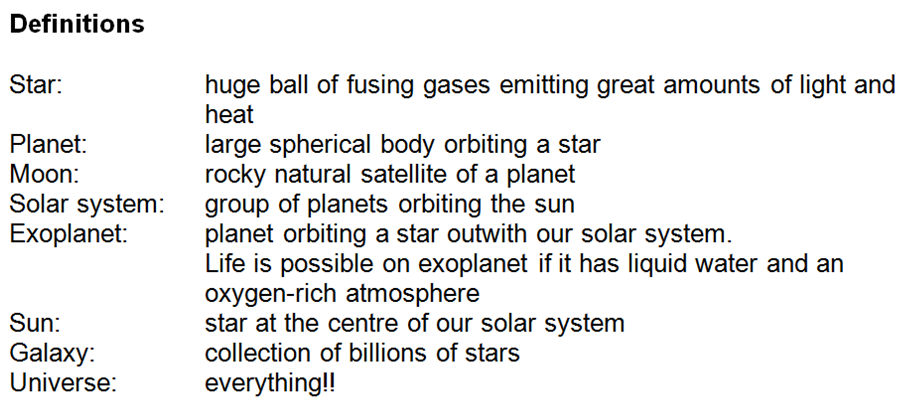Light year
This is the distance that light can travel in one year. We use light years to describe distances in space physics because otherwise the numbers would be ridiculously large.
The following table give some information about the time taken for light to cover different distances (interest only – no need to learn values)
Space Travel
Newton’s 1st Law
“An object will remain stationary or will travel at a constant velocity, provided there are no unbalanced forces acting.”
A rocket in space will continue at a constant velocity (even without boosters) since there are no forces such as air resistance or friction to slow it down.
Newton’s 3rd Law
“Every action has an equal and opposite reaction”
What this means is if A exerts a force on B, then B exerts an equal size of force backwards on A.
This law is used when dealing with the propulsion of rockets and spacecrafts:
The burning gas is forced backwards out of the rocket. At the same time the gas exerts a force on the rocket which is equal in size but opposite in direction. This force pushes the rocket forwards.
Forces acting on each other in this way are known as “Newton Pairs”.
e.g. When a golf club exerts a force on the ball, the ball exerts an equal force back on the club. These forces are Newton Pairs.






